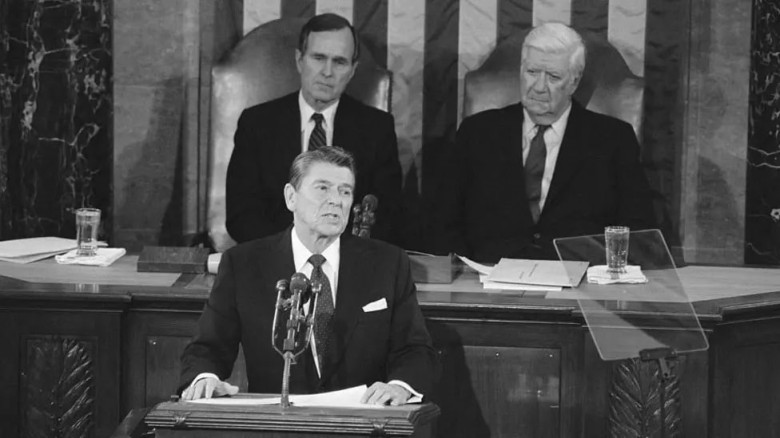Trump Revives Long-Held Conservative Goal to Dismantle Education Department
Four Decades After Reagan First Proposed It, Trump Moves to Curb Federal Role in Education
In 1982, President Ronald Reagan stood before Congress during his State of the Union address and declared his intent to eliminate the U.S. Department of Education. Calling for cuts to what he saw as bloated federal bureaucracy, Reagan's message resonated with conservatives eager to reduce Washington's influence over local and state affairs.
More than 40 years later, former President Donald Trump is attempting to fulfill that vision. Through a new executive order, Trump has directed Education Secretary Linda McMahon to take “all necessary steps” to begin dismantling the department and return control over education to the states, according to a fact sheet from the White House.
While fully abolishing the department would require an act of Congress—an unlikely prospect—Trump has already initiated large-scale layoffs and is working to reduce the agency’s responsibilities.
A Long-Standing Conservative Goal
Trump's move taps into a decades-old conservative objective that has united various Republican factions—from establishment figures and evangelical voters to the populist "Make America Great Again" base.
His order cites several justifications: a federal education spend of $3 trillion “without improving student outcomes,” declining test scores, an overemphasis on “ideological initiatives,” and a belief that educational control should rest with the states.
Jonathan Butcher, an education policy expert and senior research fellow at the conservative Heritage Foundation, said these arguments have been consistent since Reagan’s presidency. "Reagan rightly saw that creating a federal agency in Washington would only lead to growth and overreach," he said.
The modern Department of Education was re-established in 1979 under Democratic President Jimmy Carter, immediately drawing criticism from conservatives. During his 1980 presidential campaign, Reagan famously called it a “bureaucratic boondoggle” that replaced local preferences with top-down federal mandates.
Calls to abolish or downsize the department surfaced in every Republican administration since then, though none succeeded due to limited congressional backing. In 1995, then-House Speaker Newt Gingrich said, “I do not believe we need a federal department of homework checkers,” calling the agency a “massive disappointment.”
Culture Wars Give New Momentum
What sets today’s efforts apart, experts say, is the rise of political and cultural clashes in the education system.
Frederick Hess, Director of Education Policy at the American Enterprise Institute, said that while conservative critiques of the department go back to Reagan, today’s “culture wars” have given those arguments new urgency.
“There’s a sense on the right that the department provides centralized access for progressive groups to shape national education policy,” Hess explained. “It’s been part of the critique for decades, but now it’s amplified by cultural concerns.”
Despite renewed energy behind the idea, Hess warns of widespread misunderstandings about the department’s role. Unlike the UK’s education ministry, the U.S. Department of Education doesn’t set curricula or directly control school operations. Most educational authority and funding rest with states.
The department does, however, administer key federal programs like student loans and Pell grants for low-income students—programs the White House says will continue, even under a restructured department.
Critics Push Back Amid Legal and Political Uncertainty
Trump’s plan is already drawing fierce opposition. Democratic lawmakers argue that dismantling the department risks student aid, educational equity, and state funding. Legal challenges have also begun targeting the administration’s layoffs and broader restructuring plans.
According to Hess, both supporters and critics may be overstating the department’s importance. “There is a lot of red tape that slows schools down,” he said, “but eliminating the department won’t remove those regulations unless the underlying laws are changed.”
He pointed to federal programs like Title I funding and Pell grants, which come with statutory requirements that won’t simply vanish with the agency’s downsizing. “If you really want to reform federal education, you need to rewrite the laws—not just shrink the department,” Hess said.
A Campaign Promise in Motion
Nonetheless, Trump’s move is seen by supporters as the fulfillment of a major campaign promise.
“On the campaign trail, he said education should be a state priority, not a federal one,” said Butcher. “This is about more than just cost-cutting—it’s about restoring state autonomy and rebalancing power.”
As the legal and political battles unfold, Trump’s effort marks one of the boldest attempts in recent history to redefine the federal government’s role in American education—and bring a conservative dream decades in the making closer to reality.









































































Leave A Comment